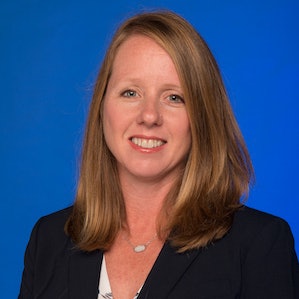Over the last four decades, Latino and African-American students were among the fastest-growing demographics in higher education. Since the mid-1970s, the Latino college student population has increased fivefold, with one out of every five college students being Latino by 2017. During the same 40-year period, Black enrollment doubled. But the disproportionate impact of the COVID-19 pandemic has reversed much of that hard-fought progress. There are more than one million fewer learners enrolled in college than before the pandemic began. Black and Latino students were the most affected, leaving college in droves. Many declined to enroll in the first place.
The historic gains made in recent years resulted from colleges and universities across the country focusing on eliminating disparities in educational access and student access based on race, gender, and socioeconomic status. We must now redouble our efforts, regaining the ground lost during the pandemic and charting a new path toward even greater student success for all learners. This will require developing a deeper understanding of every student’s unique circumstances, challenges, and needs, as well as delivering the right kind of support at exactly the right time. The key lies in not helping learners adapt to an institution but in ensuring that an institution can adapt to its learners, no matter their background.  Dr. Tammy Jordan Wyatt
Dr. Tammy Jordan Wyatt
The University of Texas at San Antonio is fortunate to have had a significant head start on this front. The university was founded to close an educational access gap in a major American city not served by a public university. San Antonio was then and remains today the nation’s largest Hispanic-majority city. While, like many institutions, UTSA has not been immune to setbacks in recent years, our roots as an access-oriented university serving Latino students left us uniquely prepared for this historic moment. We learned long ago that there is no one-size-fits-all playbook for student success, and it’s a lesson that continues to help us better serve all learners on our campus.
Over the past decade, our efforts to better understand and serve our students have been dramatically bolstered by access to real-time data. The data has helped reveal the varied challenges facing our students as individuals, as well as better insights into how to address those challenges through academic support, career learning opportunities, and initiatives designed to increase belonging and community.
Historically, our student success services seemed to primarily serve those learners who arguably benefitted from them the least. These are learners who already knew their way around a college campus, the importance of student support resources, and where to find them. New advances in data science and analytics have helped us expand access to—and improve the efficacy of— these programs. Since deploying Civitas Learning’s Student Impact Platform, for example, our academic advisors are now able to quickly identify and connect with learners who are struggling, especially in gateway courses that are crucial for their majors. Armed with up-to-the-minute insights, advisors can proactively encourage students who are academically at-risk—those with GPAs of between 2.0 and 2.5—to take advantage of academic coaching.
Our improved analytics capabilities have helped us identify three specific student populations, in particular, who could benefit the most from additional support and targeted interventions: readmitted students, learners admitted through UTSA’s test-optional admissions program and historically underrepresented male students. To support this latter group, for instance, UTSA launched Brothers United, a mentoring student organization centered on Black and Latino men. This initiative offers ongoing formal mentoring as well as three annual events on topics such as career development, self-marketing, and restorative justice.
But the mentoring program proved to be just one piece of the puzzle. The university also used data analytics to create a comprehensive inventory of our student success initiatives, examining not only each program’s overall effectiveness but their impact on certain sub-groups of learners. This research showed significant increases in persistence for students who participated in tutoring programs and who received supplemental instruction. We learned that tutoring was immensely effective for males and African American students, in particular. In response, UTSA began an outreach campaign specifically focused on encouraging male students from minority backgrounds to take advantage of tutoring services.
The methods we have put in place to address the needs of special populations of students are now being scaled in ways that have a positive impact across campus. Overall, learners who engaged with academic advising services have experienced an 8.1 percentage point lift in persistence. As a result of this years-long effort, UTSA avoided the historic enrollment declines other institutions experienced during the pandemic.
By working together across the institution and using data to better understand the challenges facing students, colleges can improve student outcomes during a period of profound volatility for postsecondary learning. This work has never been more important. We can’t let the short-term setbacks of the pandemic translate into a long-term threat that undermines the promise of higher education and derails the academic aspirations of a generation of learners.
Dr. Tammy Jordan Wyatt, is vice provost for student success at the University of Texas at San Antonio















